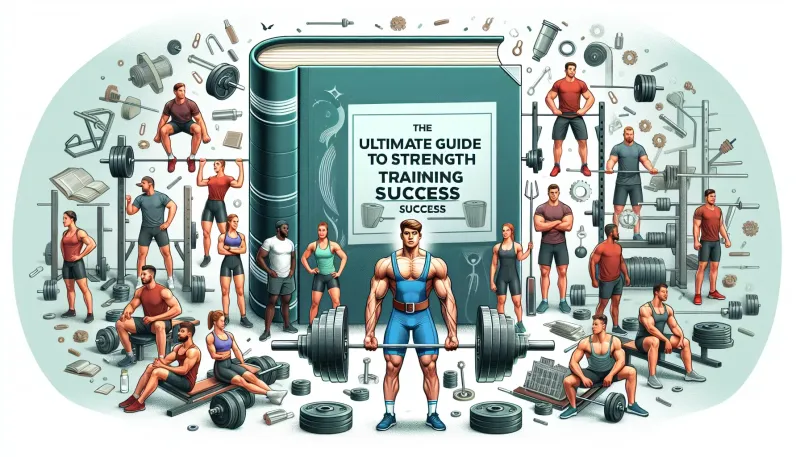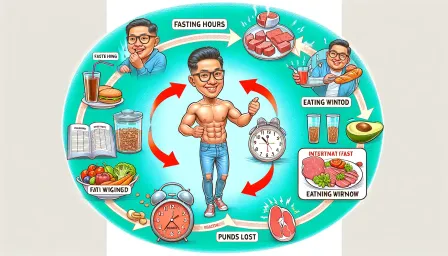The Ultimate Guide to Strength Training for Powerlifting Success

Learn everything you need to know about strength training for powerlifting. Discover effective workout plans, nutrition tips, and expert advice for powerlifting success.
Powerlifting is a sport centered around the bench press, squat, and deadlift. To achieve success in powerlifting, a precise and well-planned approach to strength training is essential. This guide covers all you need to know about strength training for powerlifting, from effective workout plans to nutrition tips and expert advice.
Introduction to Powerlifting
Powerlifting is a competitive strength sport that requires maximum exertion in three lifts: the squat, bench press, and deadlift. Unlike bodybuilding, which focuses on muscle aesthetics, powerlifting emphasizes raw strength. Success in powerlifting demands more than just lifting heavy weights — it requires a comprehensive understanding of technique, programming, and recovery.
Understanding Strength Training for Powerlifting
Strength training for powerlifting is a specialized form of resistance training designed to increase maximal strength. The primary goal is to perform at peak levels in the three main lifts. This requires a well-structured training regimen, consistent practice of proper lifting techniques, and a thorough understanding of one's body mechanics.
The Three Core Lifts
Powerlifting revolves around three main exercises:
- Squat: A compound exercise that focuses on the lower body, particularly the quadriceps, hamstrings, and glutes.
- Bench Press: Targets the chest, shoulders, and triceps, evaluating upper body pushing strength.
- Deadlift: A full-body movement that primarily works the lower back, glutes, hamstrings, and grip strength.
Key Components of Powerlifting Strength Training
Proper Technique
Technique is paramount in powerlifting. Poor form not only reduces the effectiveness of the lifts but also increases the risk of injury. Focusing on proper alignment, bracing, and lifting mechanics is essential. Athletes should consider working with a coach to ensure their form is optimized.
Progressive Overload
Progressive overload is a principle that involves gradually increasing the weight, frequency, or number of repetitions in your strength training routine. This ensures continuous muscle adaptation and growth. Implementing a structured program that incorporates progressive overload is crucial for long-term strength gains.
Periodization
Periodization involves dividing training into specific cycles or phases, each with a particular focus. Common phases include hypertrophy, strength, and peaking phases. Periodization helps manage fatigue, enhance performance, and prevent overtraining. It is a strategic approach to ensure athletes peak at the right time for competition.
Creating a Powerlifting Training Program
Setting Goals
Setting clear, achievable goals is the first step in developing an effective training program. These goals could range from improving specific lifts to achieving a personal best in competition. Goals should be specific, measurable, attainable, relevant, and time-bound (SMART).
Sample Training Split
A typical powerlifting training split might look like this:
- Day 1: Heavy Squat, Accessory Work
- Day 2: Heavy Bench Press, Accessory Work
- Day 3: Rest or Active Recovery
- Day 4: Heavy Deadlift, Accessory Work
- Day 5: Light Squat and Bench Press, Technique Work
- Day 6: Accessory Work (e.g., upper body, core, lower body assistance exercises)
- Day 7: Complete Rest
Accessory Exercises
Accessory exercises support the main lifts by targeting muscle groups that may be underdeveloped. Examples include:
- Front Squats: Enhance quadriceps strength for a stronger back squat.
- Incline Bench Press: Focuses on the upper chest and shoulders to support the bench press.
- Romanian Deadlifts: Target hamstrings and lower back to improve deadlift performance.
Nutrition for Powerlifting
Macronutrient Breakdown
Nutrition plays a pivotal role in powerlifting performance. A balanced diet with the right macronutrient ratios supports muscle growth and recovery. Powerlifters should focus on:
- Protein: Essential for muscle repair and growth. Aim for 1.2-2.0 grams of protein per kilogram of body weight.
- Carbohydrates: Provide energy for intense training sessions. Complex carbs are preferable for sustained energy.
- Fats: Vital for hormone production and overall health. Healthy fats from sources like avocados and nuts are recommended.
Hydration and Recovery
Staying hydrated is critical for optimal performance and recovery. Proper hydration helps maintain muscle function and reduces the risk of cramping and injury. Adequate sleep and active recovery techniques, such as stretching and foam rolling, also play a crucial role in a powerlifter's regimen.
Common Mistakes to Avoid
Overtraining
Overtraining occurs when the body does not get adequate time to recover between intense training sessions. Symptoms include persistent fatigue, decreased performance, and increased injury risk. Monitoring training volume and incorporating rest days into your schedule can prevent overtraining.
Ignoring Mobility Work
Mobility and flexibility are often overlooked in powerlifting. Incorporating mobility exercises can improve range of motion, reduce injury risk, and enhance lifting efficiency. Regular stretching and mobility drills should be a part of any comprehensive powerlifting program.
Neglecting Technique
Many lifters make the mistake of prioritizing heavy weights over proper technique. This not only limits progress but can lead to serious injuries. Emphasizing form and gradually increasing weights ensures long-term success and minimizes injury risk.
Conclusion
Strength training for powerlifting requires dedication, technique, and a well-planned approach. By focusing on proper technique, implementing progressive overload, and following a structured training program, athletes can achieve significant strength gains. Additionally, proper nutrition, hydration, and recovery are essential for optimal performance. Avoiding common mistakes and continuously refining your training methods will pave the way for powerlifting success.
Whether you are new to powerlifting or an experienced lifter looking to enhance your performance, this guide provides valuable insights to help you succeed in the sport of powerlifting.



























